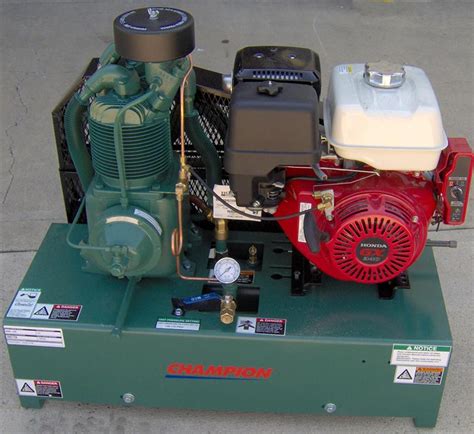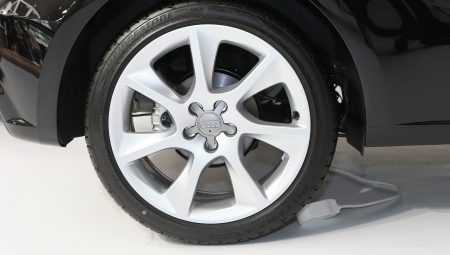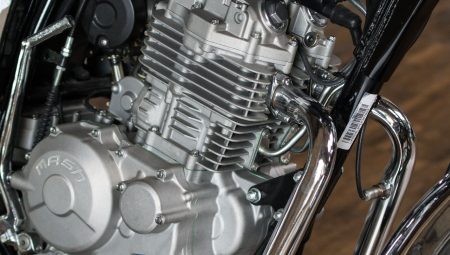Explore the benefits, types, installation, and maintenance tips for engine-mounted air compressors to optimize your machinery’s performance and reliability.In various industries, efficiency and reliability are paramount, especially when it comes to powering tools and equipment. Engine-mounted air compressors have emerged as a popular solution, seamlessly integrating air compression with engine systems to deliver high performance and convenience. These compact units are designed to maximize space while minimizing the dependency on external power sources, making them ideal for construction sites, agricultural applications, and automotive repairs. In this blog post, we will explore the ins and outs of engine-mounted air compressors – from their unique advantages and types to the installation process and essential maintenance tips. Whether you’re a seasoned professional or a DIY enthusiast, understanding these systems can help you optimize your operations and ensure your projects run smoothly. Let’s dive in!
Understanding Engine-Mounted Air Compressors
Engine-mounted air compressors are sophisticated devices designed to supply compressed air directly from the engine of a machine, allowing a wide variety of applications from powering pneumatic tools to providing inflation services for tires, all while utilizing the power and efficiency of the vehicle’s engine, thus eliminating the need for separate electric or diesel-operated compressors that can be cumbersome and less efficient.
This integration not only enhances the portability of air compression solutions but also optimizes the overall performance of the equipment by ensuring that air is readily available wherever and whenever needed, significantly improving work efficiency and productivity in industries such as construction, agriculture, and automotive repair, where consistent access to compressed air can make the difference between completing tasks on time and facing indefinite delays.
Furthermore, understanding the mechanics behind engine-mounted air compressors is crucial for users, as it encompasses various components such as the compressor unit itself, mounting brackets, drive belts, and ensuring compatibility with different engine types, which highlights the need for proper installation, maintenance, and knowledge of the system’s operational limits to maximize both safety and performance.
Advantages of Engine-Mounted Air Compressors
Engine-mounted air compressors offer numerous advantages that make them an essential component for various applications, especially in the construction and automotive sectors, as they are designed to be integrated directly onto a vehicle’s engine, thereby allowing for a seamless operation that contributes to increased efficiency and reduced operational costs.
One of the primary benefits of using engine-mounted air compressors is their compact design, which optimizes space management within machinery and vehicles, enabling operators to utilize every inch of available space without sacrificing performance or functionality, while also eliminating the need for separate storage for additional air compressors, which can further streamline operations on job sites.
Moreover, these compressors are renowned for their durability and reliability, being engineered to withstand harsh conditions typical in outdoor settings, such as extreme temperatures and dust exposure, ensuring that they can consistently deliver high-quality compressed air even in the most challenging environments, and this reliability significantly minimizes downt
Types of Engine-Mounted Air Compressors
When it comes to engine-mounted air compressors, it’s essential to understand that they come in various types, each designed to meet specific needs and applications; therefore, being aware of these various types not only helps in choosing the right compressor for your vehicle or machinery but also ensures optimal performance and efficiency across different tasks.
The primary types of engine-mounted air compressors are categorized by their operational mechanism, which includes reciprocating, rotary screw, and scroll compressors, each displaying unique advantages that make them preferable for certain applications, such as the reciprocating compressor which is widely favored for its robustness and the ability to generate high pressure efficiently, while the rotary screw compressor serves excellent in continuous operation settings due to its consistent airflow and lower maintenance needs.
Another interesting type worth mentioning is the belt-driven air compressor, which utilizes a belt attached to the engine’s crankshaft to operate the compressor, providing a balance between performance and affordability, often seen in various construction and industrial uses, while direct-driven compressors have a more compact design that reduces potential failure points, making them a reliable choice for dynamic environments that require immediate air supply without any lag.
In essence, understanding these types of engine-mounted air compressors allows users to make informed decisions tailored to their specific air power requirements, ensuring enhanced productivity and effectiveness in whatever task they undertake.
Installation Process for Engine-Mounted Air Compressors
The installation process for engine-mounted air compressors is a critical procedure that requires careful planning and precise execution to ensure optimal performance and reliability, and it is essential for achieving the desired airflow and pressure levels necessary for various applications, from powering pneumatic tools to providing a source of compressed air for cleaning and other tasks.
To begin with, it is imperative to select a suitable mounting location that can adequately support the engine-mounted air compressor, taking into consideration the access to the engine, the alignment with existing drive belts for proper coupling, and adequate clearance for heat dissipation as well as maintenance activities, ensuring that the unit is both operationally efficient and easily serviceable; ideally, this area will also provide a solid foundation to minimize vibrations that could potentially lead to premature wear or failure of the unit.
Next, the actual installation process typically involves several key steps: first, securely *mounting the air compressor* using the appropriate hardware that often comes with the unit, commonly comprising bolts and washers specifically designed for sturdy attachment; next, aligning the compressor with the engine’s power take-off (PTO) or other driving mechanisms, which may necessitate adjustments to the compressor’s mounting brackets or the use of spacers to ensure a straight alignment; thereafter, connecting the necessary hoses and fittings, paying particular attention to ensuring that all seals are secure to prevent any air leaks, and finally, completing the electrical connections if the air compressor is equipped with an electric start or additional features that require power, after which comprehensive testing should be conducted to verify that the system is functioning as intended.
Maintenance Tips for Engine-Mounted Air Compressors
Regular maintenance of engine-mounted air compressors is crucial not only for prolonging their lifespan but also for ensuring their optimal performance, thus avoiding costly repairs and downtime, and to achieve this, one must begin with regular inspections that involve checking the belts, hoses, and connections for any signs of wear and tear, along with promptly replacing components that may be starting to show signs of age or damage.
Furthermore, it is essential to monitor the oil levels and quality regularly, as engine oil plays a vital role in the overall efficiency of the compressor, and performing oil changes at specified intervals not only helps in reducing friction and overheating but also keeps the internal components clean, while additionally ensuring the air filters are cleaned or replaced timely; clogged filters can decrease the compressor’s efficiency and lead to unnecessary strain on the motor.
Moreover, one should never underestimate the importance of maintaining a proper cooling system, as engine-mounted air compressors operate under high temperatures, and monitoring the coolant levels as well as keeping the cooling system clean and free of debris will help prevent overheating and potential mechanical failures, while routinely checking for leaks in these systems will ensure everything is function
Frequently Asked Questions
What is an engine mounted air compressor?
An engine mounted air compressor is a type of air compressor that is directly attached to the engine of a vehicle or machinery, using the engine’s power to operate and provide compressed air for various applications.
What are the benefits of using an engine mounted air compressor?
Benefits include space-saving design, reduced weight compared to standalone compressors, and the convenience of having a continuous air supply powered directly by the vehicle’s engine.
Can an engine mounted air compressor be used for a variety of tasks?
Yes, these compressors can be used for multiple tasks including powering air tools, inflating tires, and providing air for pneumatic systems, making them versatile for both personal and professional use.
What types of vehicles typically have engine mounted air compressors?
Common vehicles include commercial trucks, construction equipment, and some off-road vehicles, which often require a reliable air source for operations.
How does installation of an engine mounted air compressor work?
Installation typically involves securing the compressor to the engine’s accessory drive and connecting its air intake and discharge lines, ensuring proper alignment and accessibility.
Are there maintenance requirements for engine mounted air compressors?
Yes, regular maintenance includes checking the oil levels, inspecting belts and hoses for wear, and ensuring the air filters are clean to maintain efficiency and extend the life of the compressor.
What safety considerations should be taken into account when using an engine mounted air compressor?
Safety considerations include ensuring that all connections are secure to prevent leaks, avoiding overloading air tools, and following manufacturer guidelines to prevent overheating and engine strain.





